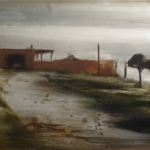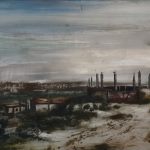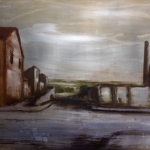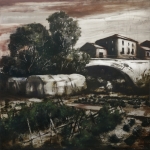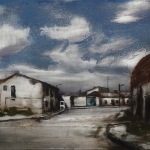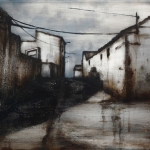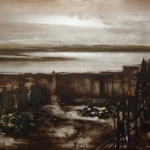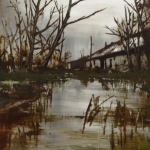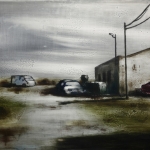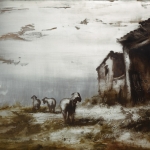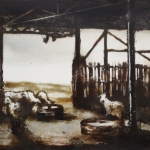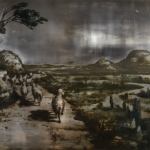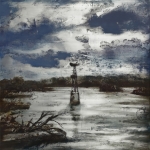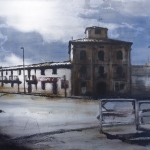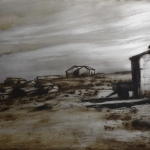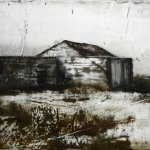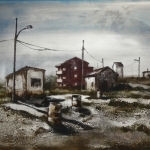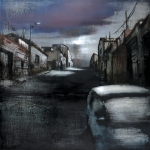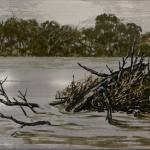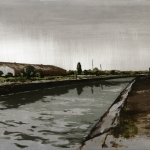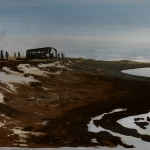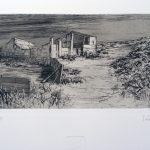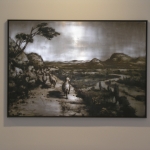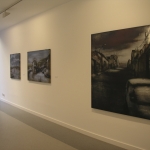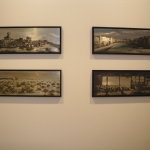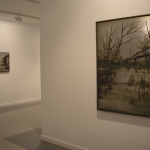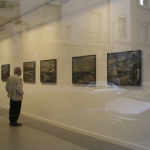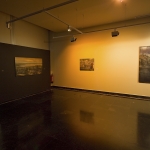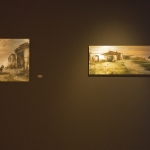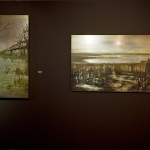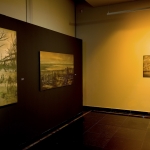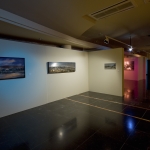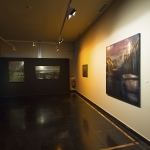In Necessity for Rural Life the painter has fashioned his own tailor-made geography. Rather than a specific place, Fortún likes to recreate an atmosphere, a character, a space which is often interchangeable. We travel through his paintings, with a flock as our guide. For once the shepherd follows the sheep. And this flock leads us through a rural area, at the same time anonymous and recognizable, from the outskirts of the big city to the loneliness of the barren plains.
Industrial buildings and houses struggling to stand out. Weighbridges that no lorry has stopped at for a long time. Abandoned vehicles sheltered by a wall. Churches in the shadow of a palm tree, as if transplanted from the Santerian tropics. Farmyards a stone’s throw from the motorway. Stables near sisals sinking their roots to search for water, and tumbleweed still on the ground soon to fly with the wind. Twilight wineries. Factories with chimneys no longer burning. Water tanks crowning a hill. Gardens under the motorway bridge. Calm pools. Storks, undisturbed in the middle of the river. The last telephone box in the last village, disconnected. Buildings with the airs and graces of the 1960s. Trees standing in a row, as if contemplating and discussing the sunrise . Tractors with trailers filled with dreams. A cow about to be swallowed up by loneliness. All this goes on around here. All this we have nearby. But we could also be in an American movie with unlimited horizons.
We are in an imprecise time, in an undefined place. And we go in and out of Fortún’s paintings on the whim of the lights that illuminate them; because each light gives a different nuance to these landscapes stolen from the metal mist. (Migel Mene).
The work in the spaces. Installations.
PICTURE MUTABLE. Ibercaja Huesca
In Necessity for Rural Life . Art Gallery.
Art Gallery



